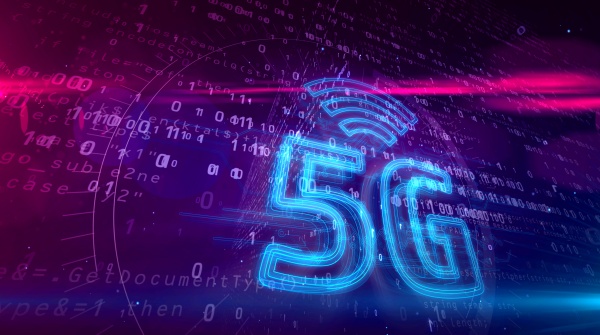5G can be released through chip innovation

5G opens the way for more connections by providing fast,
high-capacity connections. However, 5G is more than speed-it also allows
ultra-low latency, which means that the network can achieve faster response
times.
The arrival of 5G has brought an unprecedented wave of
innovation. Obviously, operators build and invest in communication
infrastructure, equipment OEM manufacturing can take advantage of this new
bandwidth and low-latency equipment, and the semiconductor industry pushes the
boundaries of individual components and solutions. These components and
solutions play a role in the following aspects The key role makes 5G a lively
reality. However, to unlock the full potential of 5G and accelerate the pace of
innovation from applications to solutions to infrastructure, close
collaboration between intelligent edge, cloud, device manufacturers and
operator ecosystems is imperative.

5G opens the way for more connections by providing fast,
high-capacity connections. However, 5G is more than speed-it also allows
ultra-low latency, which means that the network can achieve faster response
times. This can help your car become more autonomous or merge with reality in
the virtual world. 5G also promises large-scale machine-to-machine communication,
which will unleash the advantages of 5G and promote the growth of connected
devices for areas such as the Internet of Things.
Consumers will benefit most from the rich insight-driven
experience that 5G brings. With the help of artificial intelligence, we can
gain insights from data to make our world more predictable, optimized, and
efficient-in many areas, including healthcare, automobiles, and smart cities.
Through the possibilities of 5G and the power of AI,
situational awareness will become lifelike. As countless smart devices are
connected to the 5G network, data is constantly being created, collected, and
analyzed, and the output is a tangible response that can be predicted and
provide customized responses.
Imagine, for example, when you commute in the morning, your
alarm clock rings, and your coffee machine knows how long it will take you to
get up and prepare a cup of coffee when you enter the kitchen. From there, your
phone will tell you when to leave work based on your calendar for the day, and
notify your car to turn on, park in your driveway, and pass with other cars,
city cameras, and traffic lights. In the car, your watch will monitor your mood
and mood and play music tailored to you until you arrive. This is just a
glimpse of every move 5G affects you, and a personalized experience powered by
data-driven insights that affects the daily reality of every moment of your
life.
As 5G and artificial intelligence merge at the intelligent
edge, innovations around data storage, transmission, and processing are also
advancing. In order to take advantage of 5G and AI, we need to continue to
accelerate innovation, start from the big picture, and make good use of data.
One area where we will see 5G improve our daily lives is
smart cities. By enhancing bandwidth, low latency, and large-scale
machine-to-machine communication capabilities, 5G will lay the foundation for
improving urban infrastructure, transportation, energy conservation and
sustainable living, as well as social and sharing economy interactions in ways
that we can’t even imagine. Cities will be able to optimize power usage by
investing in smart sensors and smart grids to track power demand and optimize
power usage at specific locations to alleviate grid pressures that are more
likely to be outages.
Traffic management and efficiency are another important part
of a smart city. Traffic management that supports artificial intelligence can
combine smart sensors and urban cameras on the sidewalk with artificial
intelligence to send you real-time alerts and provide alternative routes. 5G
will enable the massive data sharing and transmission of smart vehicle sensors
such as 4D radar and CV-2X, so that your car can better view and communicate
with other cars and infrastructure and travel safely.
This is just one example of how 5G transmission data will be
applied to enrich and personalize experiences-we will also see powerful
innovations in healthcare, shopping, nutrition, fitness and more. At the core
of all these innovations are memory and storage. Data is an untapped resource
that will drive these data-intensive innovations and experiences, and
semiconductor innovation is critical to unlocking this potential.
The innovation brought about by 5G availability will require
the underlying infrastructure across devices and from the edge to the cloud,
which means that the infrastructure must be rebuilt from the ground up to
optimize data-centricity. This requires memory and storage solutions and
semiconductor innovation across the continuum from the edge to the cloud.
As the semiconductor industry embraces the demands brought
about by 5G and the new data economy, DRAM and NAND are experiencing rapid
growth. Customers require the platform to take up more space and require more
advanced memory and storage technologies. According to Gartner's data,
especially for memory and storage, it is expected that from 2021 to 2025, the
data capacity of flash memory will increase by 3 times, and DRAM will increase
by 2 times. As 5G and other data-rich innovations increasingly require high-performance
computing foundations of memory and storage to drive the next wave of
experiences, we are seeing this explosive growth continue. 5G will eventually
drive demand in many areas and affect all areas of the semiconductor industry.
DRAM optimized for specific applications will power the
growing demand for 5G today and in the future - including DDR for traditional
computing applications, LPDDR for battery-powered devices, and ultra-bandwidth
solutions for high-performance gaming and artificial intelligence GDDR. CXL, a
new industry standard interconnect, and embedded storage using eMMC and UFS
interfaces will also support these needs.
In order to fully realize the potential of 5G, cloud, edge,
and device ecosystems must also jointly challenge the limits. This requires a
new holistic approach to designing the end user experience and applications.
Starting from the hardware architecture (processing, memory, storage, sensors,
display), software must be tightly coupled, semiconductor suppliers must collaborate
with each other, and the rest of the ecosystem (cloud service providers, OEMs,
OSV, CSV, operators) and applications Program developers) create a seamless
environment in which 5G devices can flourish, application development, service
deployment, and data can be used in ways we haven’t even imagined yet.
Through close cooperation, focus and tenacity, we can
accelerate innovation in all aspects of the semiconductor industry and truly
break through the possibility of the integration of 5G, artificial intelligence
and edge computing. Imagine what the next killer application might be, or think
bigger, and imagine how to use data and artificial intelligence to solve the
world’s biggest challenges.
The opportunities are limitless, in the data-now let us discover
them.